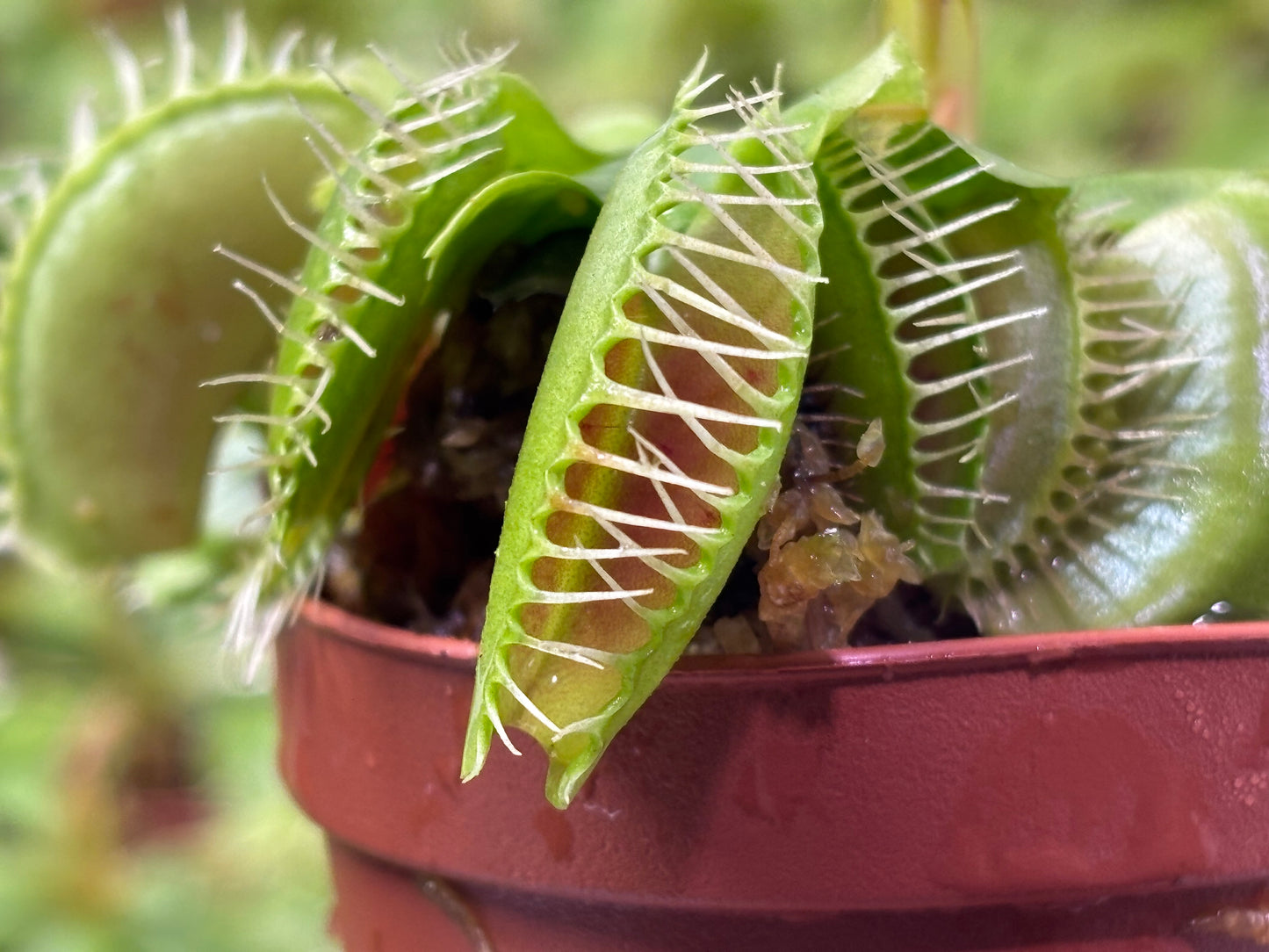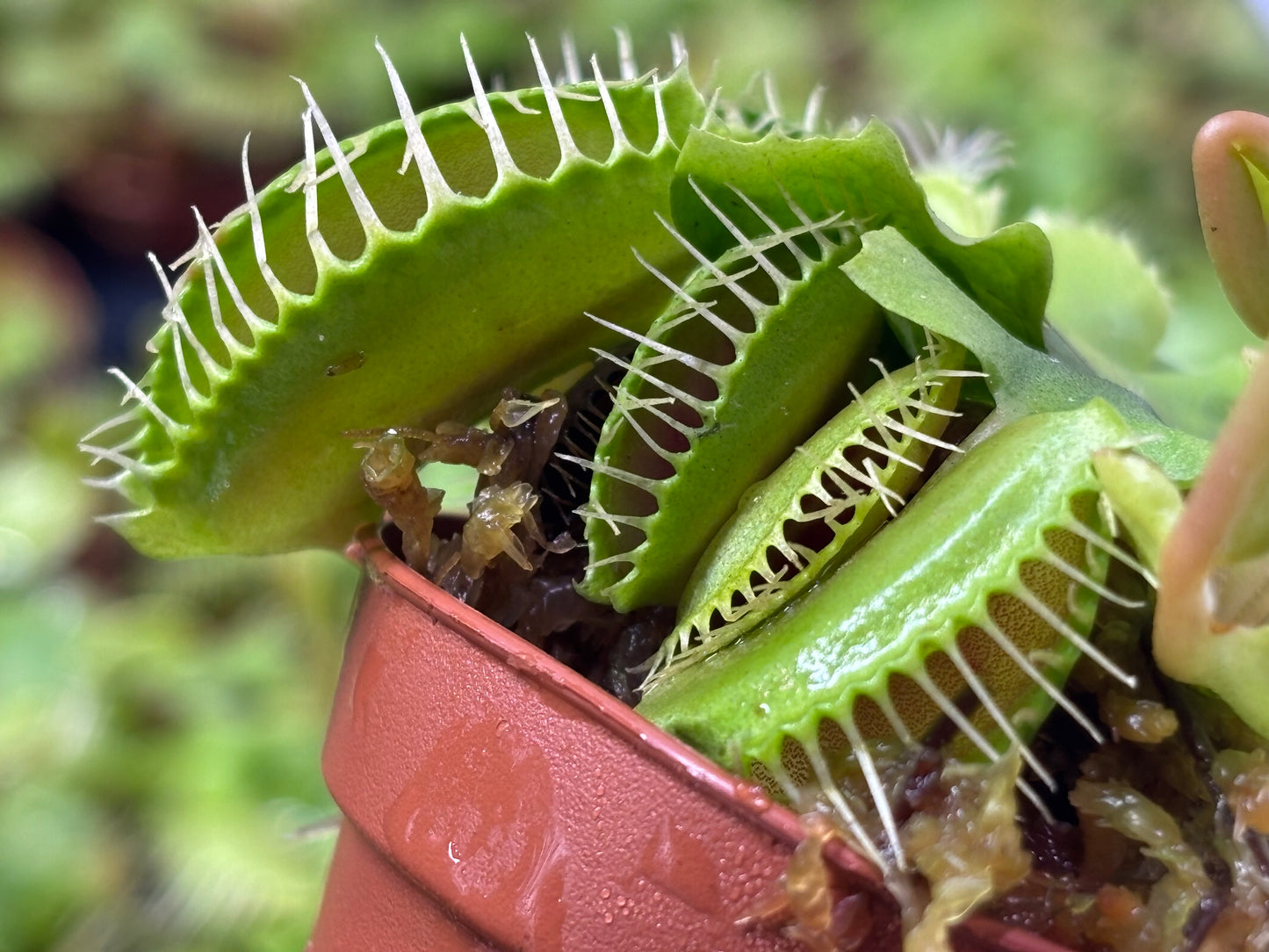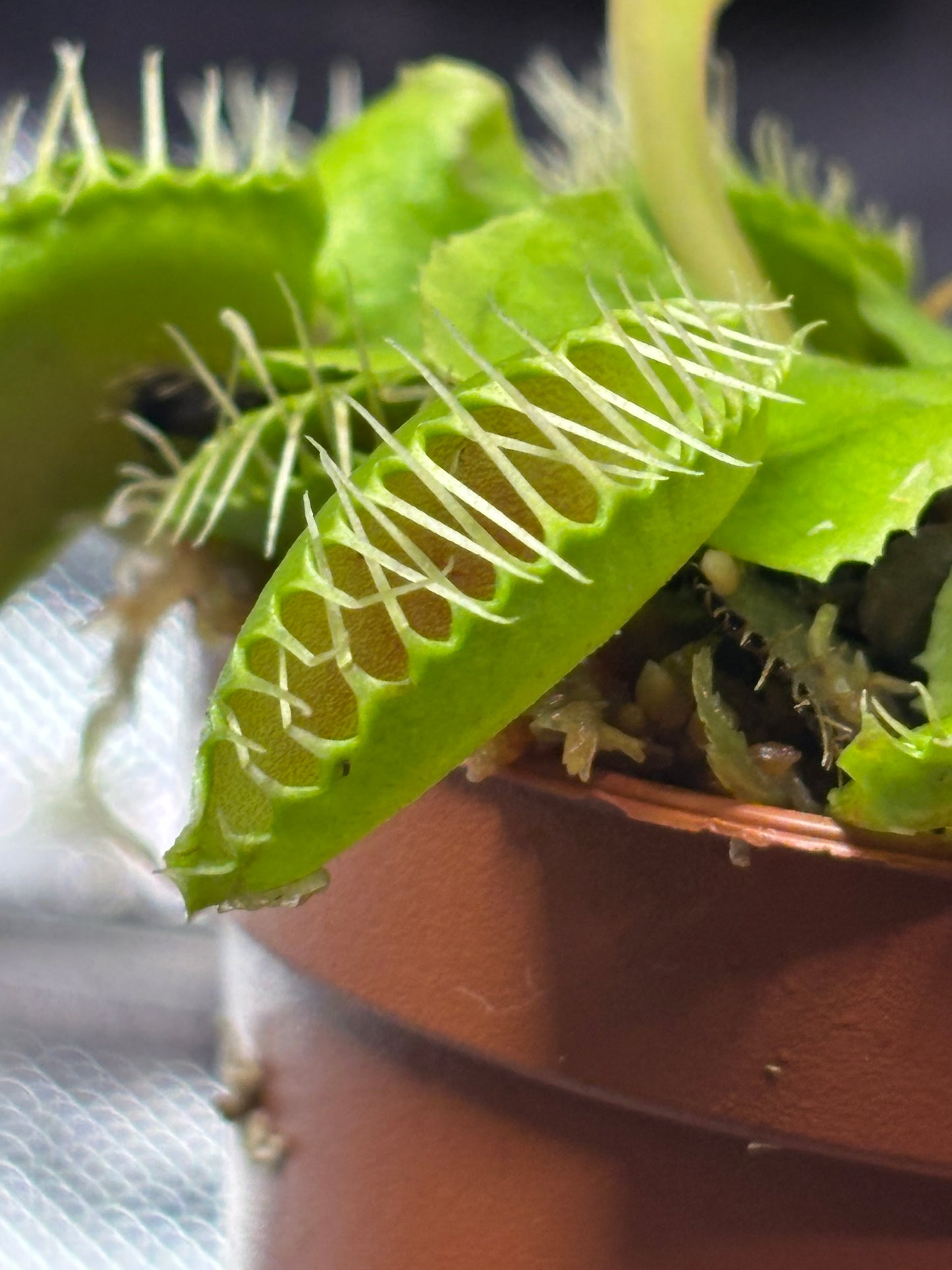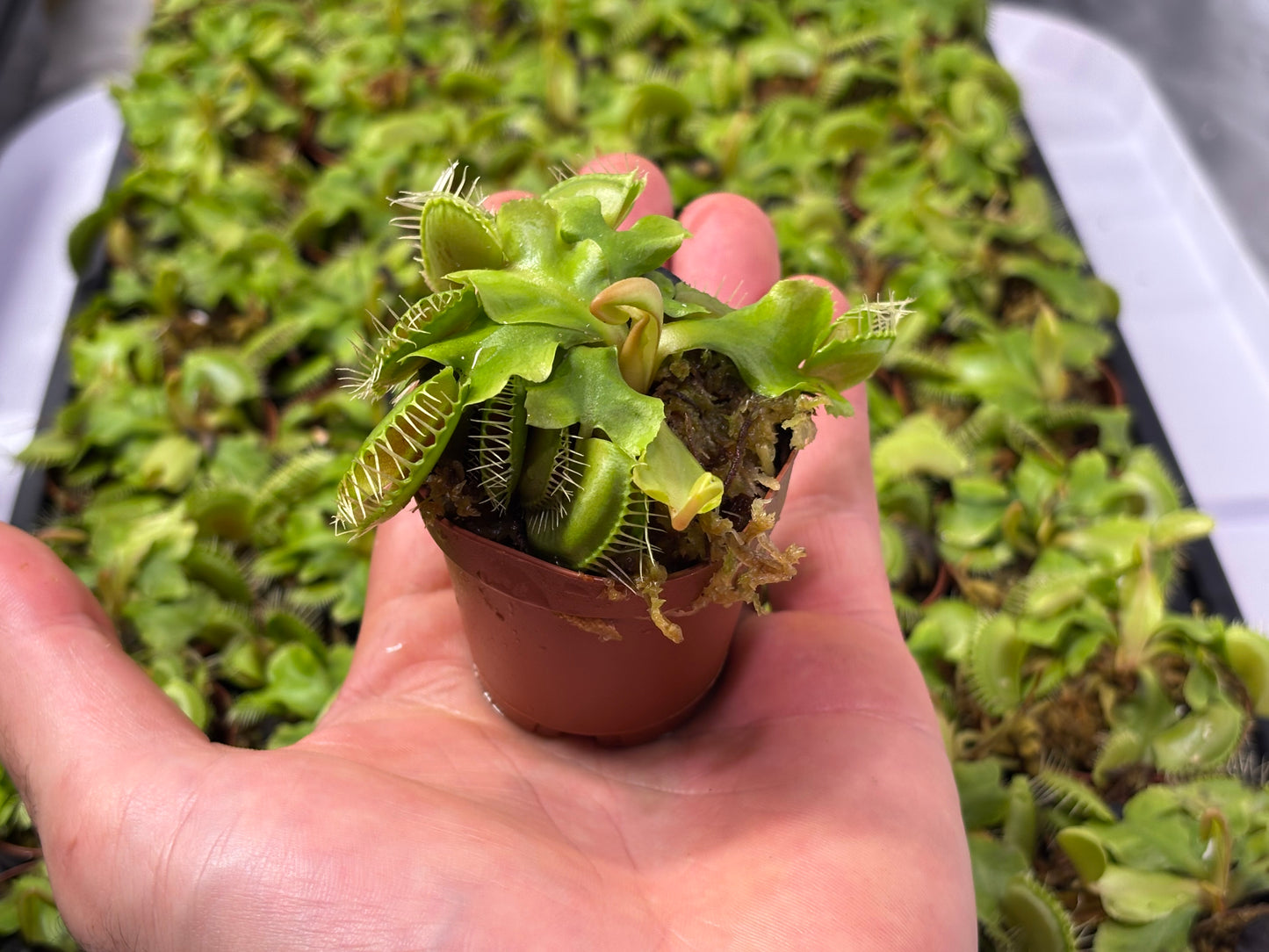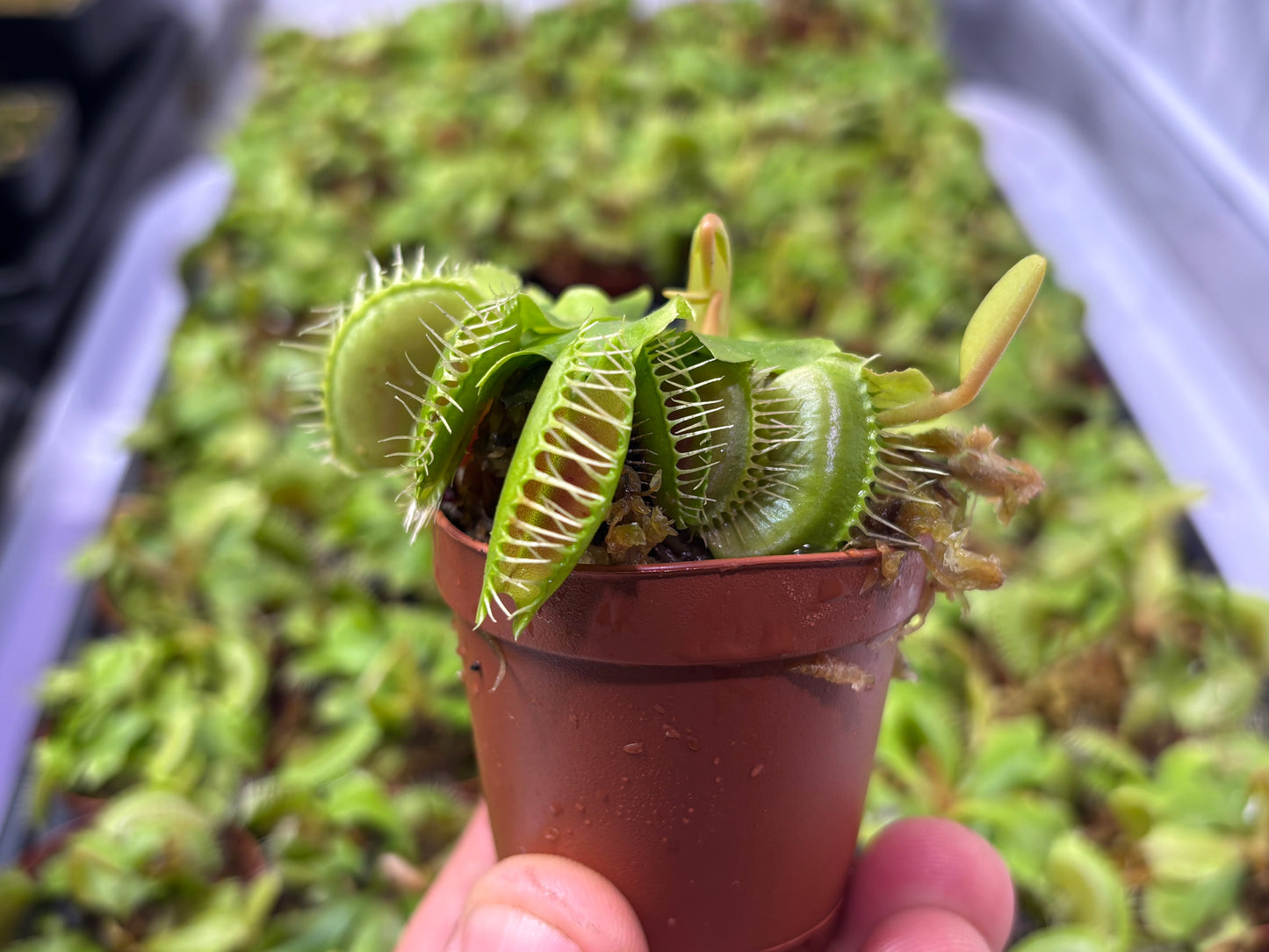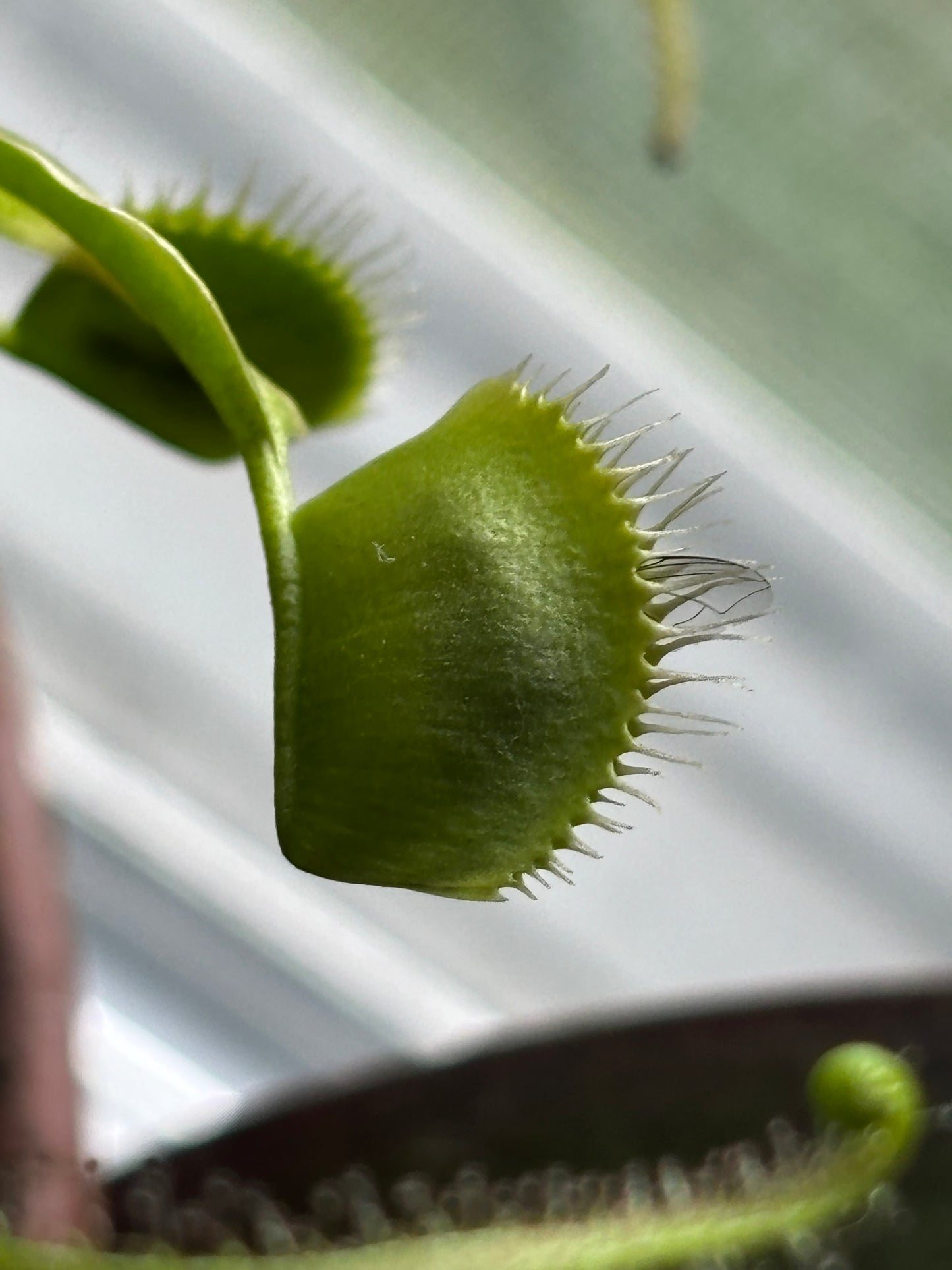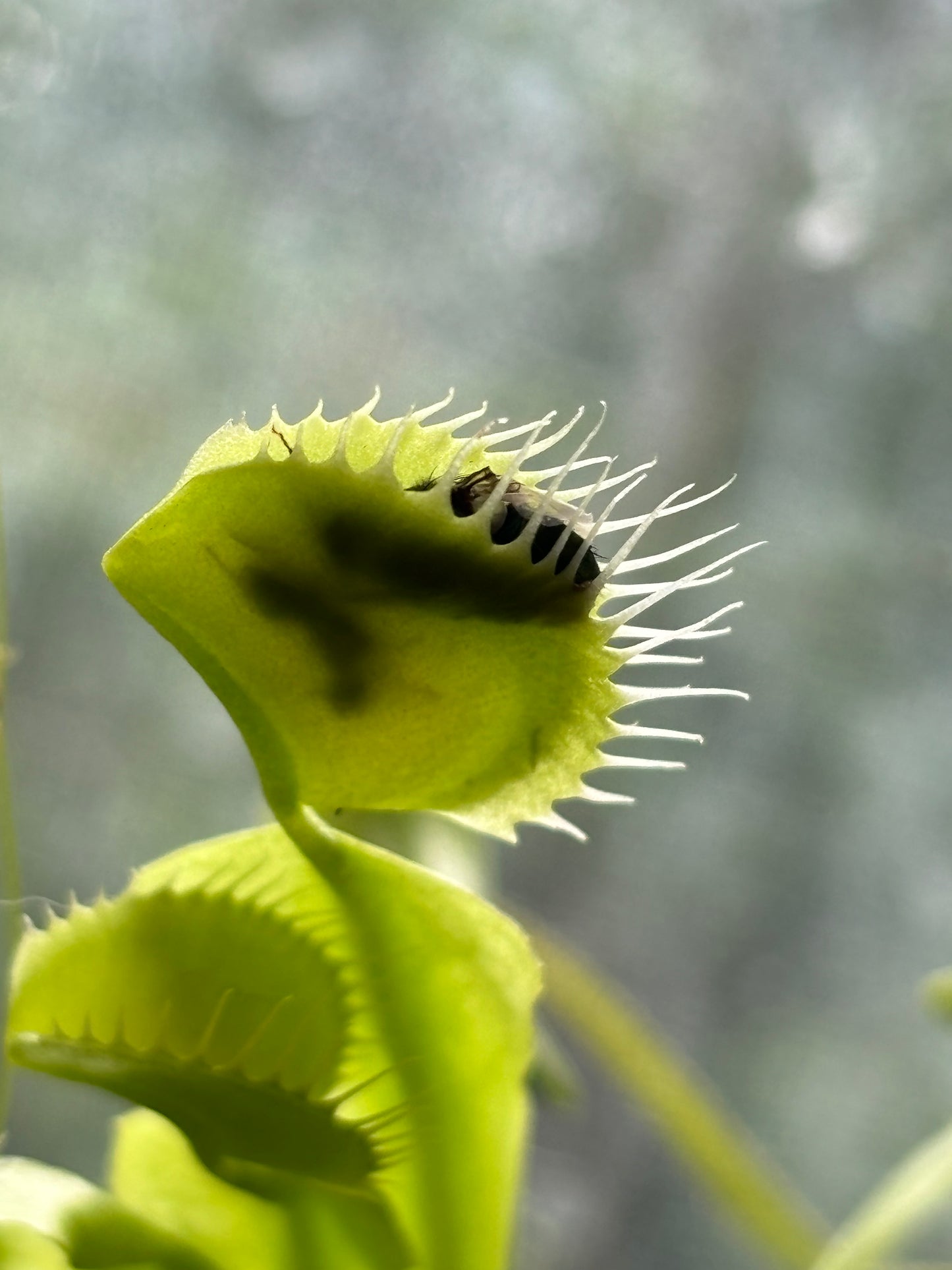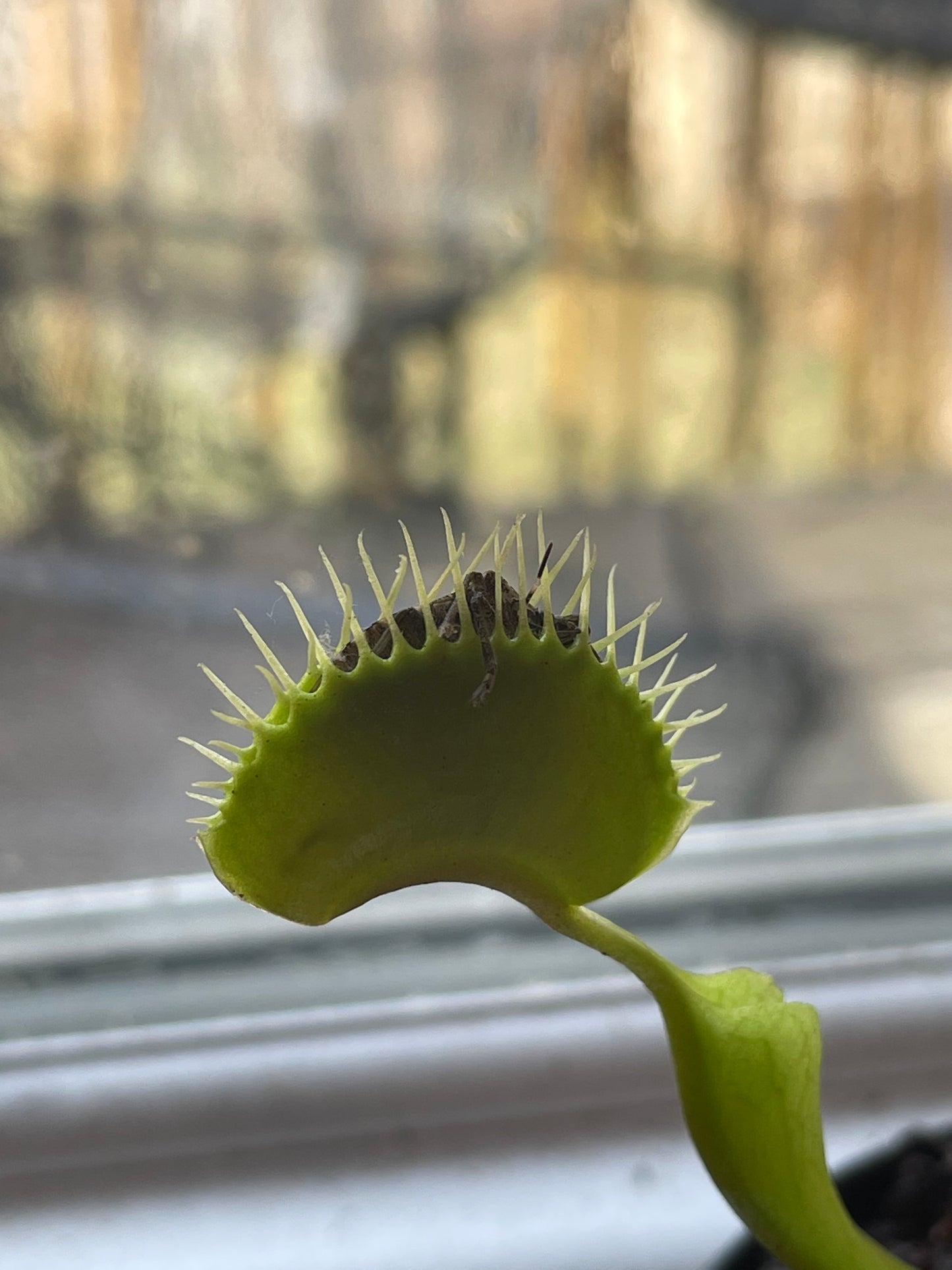Dionea muscipula - Venus Flytrap
Dionea muscipula - Venus Flytrap
Couldn't load pickup availability
GENERAL DESCRIPTION: All hail the Tipitiwitchet! Dionea muscipula, more commonly known as the Venus Flytrap is the poster child of carnivorous plants. Possibly the most interesting plant in existence, VFTs are also technically very rare. In nature, this monotypic plant is endemic only to small parts of southeastern North Carolina. Thanks to dedicated cultivators and advanced plant propagation techniques, VFTS have become very common in carnivorous plant collections and can exist as many unique and wacky cultivars! **Please note that VFTs need live prey to properly ‘eat’ and will slowly lose the ability to snap shut if actively teased, so limit closing the traps for show!**
CARE REQUIREMENTS:
**DORMANCY** Flytraps require a 1-3 month winter dormancy in which they slow or stop growth while conserving energy to get through the chilly North Carolina winter climate. Plants will slowly decline if this dormancy is avoided, so please see online tips for mimicking VFT dormancy if growing in warmer climates.
SOIL/MEDIUM:We find that our flytraps are grown most successfully in pure long fiber sphagnum moss.
CONTAINERS: Use well draining plastic or glazed ceramics while utilizing a small tray under the pot to accumulate water and help keep the medium saturated.
WATER: Use the tray method. Never let soil dry out, adding water once the tray under the pot has been dry for a day.
LIGHT: Fly traps prefer very bright full spectrum lighting. Use LED grow lights if needed and expect less red coloration without proper light.
FERTILIZATION: We recommend using MAXSEA brand fertilizer for all carnivorous plants, as these
sensitive plants respond very well to this formulation. (Available on our website). The plants will naturally catch pests, and these can be
‘fed’ to the plant by placing *live* bugs into the traps. Fertilize once every 2 weeks in spring
and summer, and once a month in winter. Never let fertilizer touch flowers!
